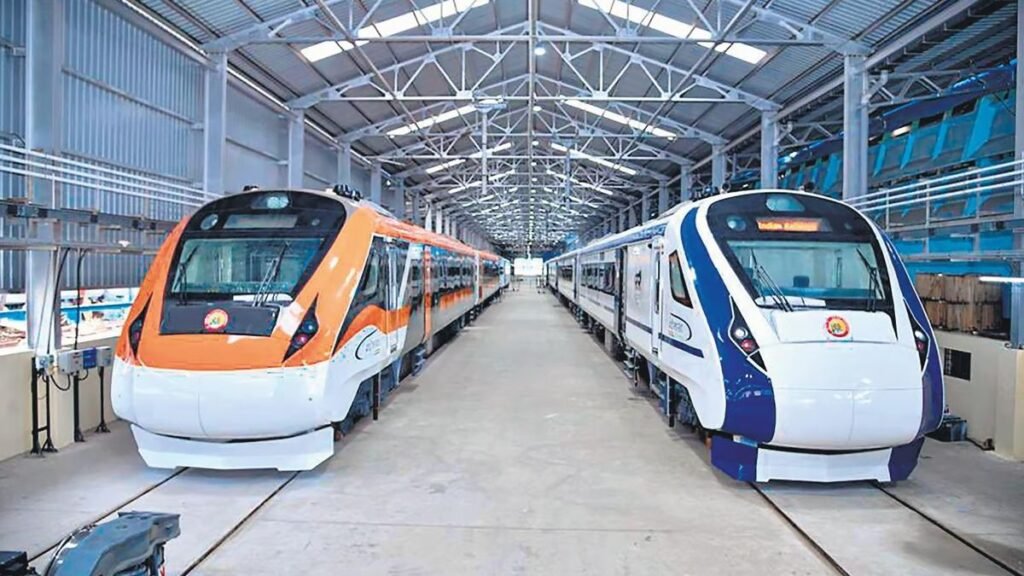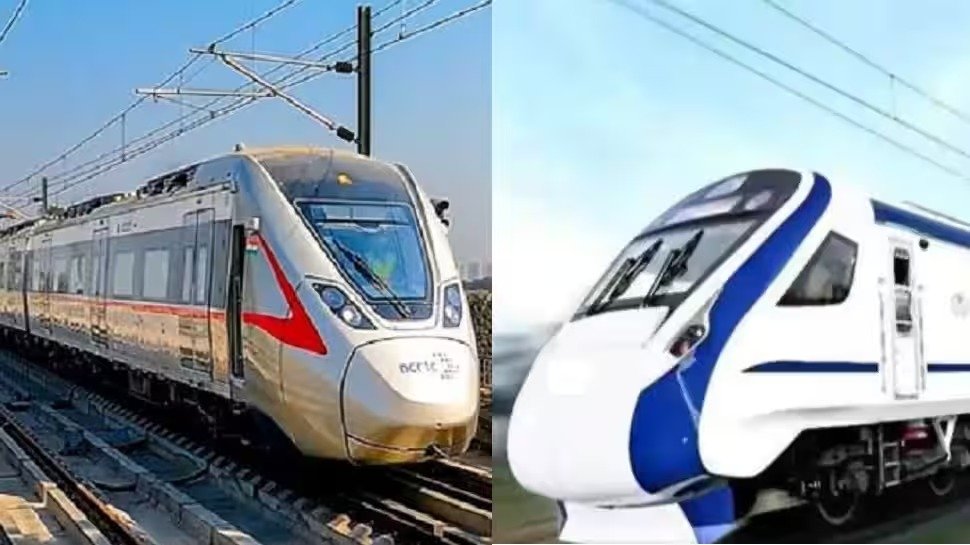Difference Between Vande Bharat Train and Vande Metro Train
In recent years, India has witnessed significant advancements in its transportation sector, particularly with the introduction of innovative train models like the Vande Bharat Train and the Vande Metro Train. These trains have revolutionized the country’s rail network, offering passengers enhanced comfort, speed, and efficiency. However, despite their similar names, there are distinct differences between the two. Let’s delve deeper into understanding these disparities.
Vande Bharat Train:
The Vande Bharat Train, also known as Train 18, is a high-speed, semi-high-speed train designed and manufactured entirely in India under the ‘Make in India’ initiative. It made its inaugural run in 2018 and has since gained popularity for its cutting-edge features and superior performance. With a maximum speed of 180 km/h, the Vande Bharat Train aims to provide passengers with a luxurious and comfortable travel experience.
Vande Metro Train:
On the other hand, the Vande Metro Train is a rapid transit system that operates within urban areas, primarily catering to commuters traveling within cities. Unlike the Vande Bharat Train, which is designed for long-distance travel between cities, the Vande Metro Train focuses on providing efficient transportation solutions within metropolitan regions. It is characterized by shorter distances between stations and frequent stops to accommodate the high volume of urban passengers.

Why this News is Important:
The Significance of Understanding the Differences
In the dynamic landscape of India’s transportation sector, staying informed about the differences between the Vande Bharat Train and the Vande Metro Train is crucial for various reasons.
Enhanced Awareness for Commuters:
Understanding the distinctions between these two train models enables commuters to make informed decisions based on their travel requirements. Whether embarking on long-distance journeys or commuting within cities, passengers can choose the most suitable mode of transportation.
Infrastructure Development Insights:
For students preparing for government exams, particularly those aspiring for civil service positions, knowledge about transportation infrastructure is essential. It offers insights into the government’s initiatives, policies, and technological advancements aimed at enhancing public transportation systems.
Policy Implications:
The differences between the Vande Bharat Train and the Vande Metro Train reflect broader policy considerations regarding transportation planning and development. Analyzing these disparities provides valuable insights into policy formulation and implementation strategies at both the central and state levels.
Technological Advancements:
Studying the features and capabilities of innovative train models like the Vande Bharat Train and the Vande Metro Train offers students insights into India’s technological advancements in the field of transportation. It underscores the country’s commitment to indigenous manufacturing and innovation in engineering.
Examination Relevance:
For students preparing for government exams, including those for civil service positions, understanding the nuances of India’s transportation infrastructure is crucial. Questions related to transportation policies, infrastructure development projects, and technological innovations are common in such exams, making this knowledge highly relevant.
Historical Context:
Evolution of India’s Rail Network
India’s railway system has undergone significant transformations since its inception in the 19th century. With the introduction of steam locomotives during the British colonial era, the country witnessed the establishment of a vast rail network connecting various regions. Over the years, India has continued to modernize its rail infrastructure, embracing technological innovations to enhance efficiency and passenger comfort.
Introduction of High-Speed Trains
In recent decades, India has made strides in introducing high-speed trains to meet the growing demand for rapid and comfortable transportation. The Vande Bharat Train represents a milestone in this endeavor, symbolizing India’s capability to manufacture world-class trains indigenously. Its introduction marked a shift towards self-reliance and technological innovation in the country’s rail sector.
Urban Transit Solutions
With rapid urbanization and population growth in metropolitan areas, the need for efficient urban transit solutions has become increasingly pronounced. The development of rapid transit systems like the Vande Metro Train addresses this need, offering commuters a convenient and sustainable mode of transportation within cities. This evolution reflects India’s commitment to enhancing urban mobility and reducing congestion on roads.
Key Takeaways from “Difference Between Vande Bharat Train and Vande Metro Train”
| Serial Number | Key Takeaway |
|---|---|
| 1. | Vande Bharat Train is designed for long-distance travel |
| 2. | Vande Metro Train operates within urban areas |
| 3. | Vande Bharat Train offers a maximum speed of 180 km/h |
| 4. | Vande Metro Train facilitates shorter distances between stations |
| 5. | Vande Bharat Train focuses on providing luxurious travel experience |
Important FAQs for Students from this News
1. Are Vande Bharat Train and Vande Metro Train the same?
- No, they are not the same. While both are innovative train models, they serve different purposes. Vande Bharat Train is designed for long-distance travel, whereas Vande Metro Train operates within urban areas.
2. What is the maximum speed of the Vande Bharat Train?
- The Vande Bharat Train offers a maximum speed of 180 km/h, providing passengers with a fast and efficient travel experience.
3. How do the Vande Metro Train and Vande Bharat Train differ in terms of operation?
- The Vande Metro Train primarily operates within urban areas, catering to commuters traveling short distances within cities. In contrast, the Vande Bharat Train is designed for long-distance travel between cities.
4. What is the significance of the ‘Make in India’ initiative in relation to these trains?
- Both the Vande Bharat Train and the Vande Metro Train are manufactured under the ‘Make in India’ initiative, showcasing India’s capability to produce world-class trains domestically and promote self-reliance in the transportation sector.
5. How do the differences between these trains impact commuters and urban infrastructure?
- Understanding the disparities between the Vande Bharat Train and the Vande Metro Train helps commuters make informed choices based on their travel needs. Additionally, it sheds light on the government’s efforts to enhance transportation infrastructure, both for long-distance travel and urban transit solutions.
Some Important Current Affairs Links

















